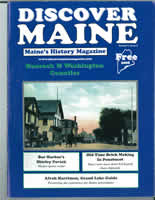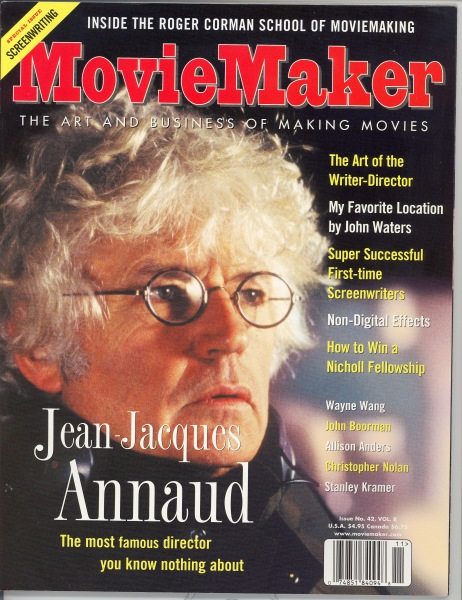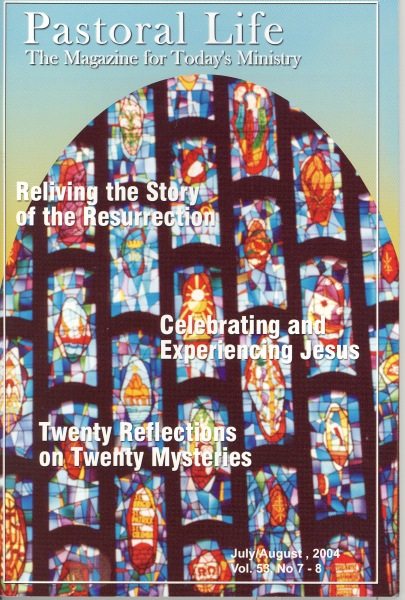Destination Nicaragua: Tranquility in an Old Trouble Spot
By Susan B. Stroh
San Juan del Sur, Nicaragua, November
“The rainy season’s over,” they said. But that hadn’t stopped the torrential rain from pounding the roof of the Hotel Isabella as I fell asleep the night before.
The next morning finds us on an unpaved jungle road, a full sized stream, fast becoming a river, stopping our four-wheel drive truck in its tracks. As I climb out of the truck, a man in our party braves the rushing water to test its depth. Splash! He’s waist-deep in water having dropped into a pothole. The other men look on, weighing the chances of proceeding and plotting the best way across.
Uh oh, I think. We’re just a bunch of gringos floundering around in a third world country!
I walk a few paces up the road to stretch my legs. I freeze at the rustling in the bushes, too loud for a bird. My imagination races through every danger the jungle could throw at us. The noise approaches.
Why exactly did I decide to come to Nicaragua?
A barefooted girl emerges through the foliage, looking about six years old, standing a safe distance away. A few more paces up the road and I can now see behind the bushes, a single-room house constructed from corrugated tin.
I wave and shrug my shoulders toward the river. There’s a tiny wave back. I smile—a tiny smile back. I silently admire her dress, hues of orange and blue. As I approach her, the look of wonder in her dark eyes mirrors the excitement I had felt listening to a party of Nicaragua-philes my husband had introduced me to a few weeks earlier. Now I remember what made me want to travel here.
My husband had wanted to disabuse me of images of death squads, malaria and aching poverty that were the last major media coverage I could associate with Nicaragua—from the 1980’s. “Why Nicaragua?” I had asked. He simply said, “Honey, you need a major update. I want you to meet some people who just got back from there.”
As the girl disappears into the foliage only to pop up, joined by two older children in a pane-less window in her hut, the words from those enthusiastic returnees come to mind.
“It’s a frontier–”
“…sweetest, friendliest people.”
“Nicaragua’s at peace, you know.”
“…third democratically elected administration.”
“Just watch, it will be the next Costa Rica.”
“Simply the best real estate deal of the decade.”
“…mile after mile of deserted beaches.”
“…an awesome left, a smoking right…”
“The clock has been turned back…”
“You can make a difference there…”
“The rainy season’s over now.”
Not quite, Amigos!
The men have managed to turn the truck around and my husband beckons. The children run out of the hut to wave us off–this time, with bigger grins. As we maneuver puddles on the way back to our fishing village, the sun blesses the lush foliage, droplets glistening, and everything smells fresh. Climbing up over the hills, the vista opens before us, revealing the horseshoe harbor of San Juan del Sur–its fishing, sailing and diving boats bobbing beyond the white crescent beach. I am starting to fall in love.
The trip from Los Angeles to Nicaragua was easy: no inoculations needed, just beach and hiking clothes and a little over $500 for the red-eye roundtrip ticket on Taca airlines to Managua. Including an hour stop in El Salvador, the trip was a total of about seven hours. We were met at the capitol’s fine international airport by driver Juan Carlos, engaged by Hotel Isabella in San Juan del Sur, two and one half hours south on the Pacific side.
Juan slalomed around potholes, pigs and ox-carts on the road through Tipitapa. Amusing were the little children who line the highway here and there, pointing to the pits in the road as we approached. Somewhere around Nandaime, a town where tropical plants grow in profusion, we turned onto the Pan American Highway, a much better paved and maintained road. About an hour from San Juan del Sur, the landscape opened up, and between two green ridgelines, we beheld Lake Nicaragua, the tenth largest fresh-water lake in the world. Situated in the lake is an island with two volcanoes, home of some of the oldest and previously most isolated indigenous peoples of Nicaragua. We made a note to come back another trip to visit the Isla de Ometepe.
Located a few blocks from the bay in San Juan del Sur, Hotel Isabella is a welcoming, airy place with a great porch for talking and a balcony for ocean viewing. It is the only place in town with consistent hot water, bathtubs and new air conditioners. It is immediately apparent that the hotel was up to North America’s specifications, especially the standard of service and care. American Mike Iacoboni, an energetic retired dentist and pilot who co-purchased the hotel with Jane Mirandette, told us that his adopted homeland is “a country that is moving from an agricultural economy to a service economy without industrialization in between, so they are learning quickly about customer service.” Mike and Jane turned out to be tremendous sources of information, history, lore and inspiration. Not all local hotels have English-speaking managers, so for a first trip to Nicaragua, it was great to have their generous guidance.
The first thing we did after unpacking, was to take a boat trip around the bay–a refreshing hour or so gliding in and out of coves and bays without a person and very few houses in sight. From the water, we saw Marsella Beach Resort, a group of seven octagonal cabanas nestled into the steep hill immediately above Playa Marsella. We were told that during the season, one could see turtles laying their eggs on that beach.
After the boat trip, we had lunch at a hillside restaurant and hotel called Pelican Eyes, which has a a style typical of San Juan del Sur, where an exterior wall is missing, bringing in nature. The restaurant integrates local pottery and weaving, has an infinity pool that waterfalls down toward the village and offers awesome views. Millie Paul, a seasoned traveler from California exclaimed, “Pelican Eyes has an intriguing blend of local fare with a sophisticated flair and is as beautiful a spot as any I’ve seen anywhere.”
Hiking up a steep hill above the village of San Juan del Sur we saw spectacular views of Costa Rica, which lies just twenty miles to the south, and of many bays and inlets gracing the Pacific seashore. Imagine the Southern California coastline circa early 1900’s. Now add more tropical trees, monkeys, parrots, some humidity and perpetual off shore breezes.
Everything in San Juan del Sur is scaled down and simple. Unlike the larger cities of Managua and Granada, there is not an American-style billboard in sight, no graffiti, no violent crime, no drugs and no begging children. The children in San Juan del Sur are shy but friendly and neat and clean, no matter how poor. The impression one has is that San Juan del Sur is a town of beloved young people. At 7:00 AM one sees an amazing number of schoolchildren in white and navy uniforms appearing from all directions.
During the week we were there, we met a mix of adventure travelers: backpackers, fishermen, baby-boomer investors looking for property, and people seeking some place a little wilder than they were accustomed. We met energetic surfers of all ages, finding and riding excellent waves. Many hotel guests also spoke highly of the diving, fishing and sailing. There are guides ready to take you out for all these sports.
If you’re looking for low-budget adventures, you can try traveling the hostel route. We met backpackers staying at the Hospedaje Nicaragua with a private bath in town for eight dollars a night. There are nine local hostels ranging from about $8 a night with shared bath to $25 per night. Other backpackers told tales of sleeping on beaches, taking canopy tours, and studying unusual flora and fauna. Pelican Eyes, Piedras Y Olas resort is the fanciest place in town built into a hillside overlooking the Pacific ocean with an infinity pool overlooking the view.
It takes some initiative to travel on your own in rural Nicaragua: there are no theme parks, no franchise businesses, and no signs pointing out photo opportunities. You discover what’s available there face-to-face and person-to-person. You may well be among the first foreigners to ever fish, sail, surf, dive, bike, kayak or explore in some regions.
Until the revolution in the 1970’s San Juan del Sur was a major port. Now the marina is peaceful and picturesque. Because cruise ships are going there in greater numbers, Nicaragua is being discovered by a growing number of travelers. Despite the escalation of tourism, and the boom it portends, there are no five-star hotels, no high-rise resorts. And many locals and foreigners who live in the community want to keep it that way.
“San Juan del Sur is relatively undeveloped and very pristine.” Mike Iacoboni of Hotel Isabella says after fixing us a robust breakfast of mixed fresh fruit, scrambled eggs and pancakes. “But San Juan del Sur also happens to be the little community that can provide the goods and services necessary to run a hotel. It also happens to be one of the traditional places that Nicaraguans come to for a beach vacation.”
Mike Iacoboni continues, “The guidebooks say that Nicaraguans are the friendliest people in Central America.” He thinks their history explains why. “Over 1500 years ago, the indigenous race was a group of people who left Mexico when the Aztecs and Mayans were promulgating the wars of expansion. The indigenous people, who departed Mexico, later became the Nicaraguans. And they were lovers, not warriors. They were following a female sorceress, a bruja, and she said, ‘You will come and settle in the land that has a lake and two volcanoes in it.’ And they got their horses and mules, and walked until they found this place. They are still essentially lovers.”
In Salmon Rushie’s book, The Jaguar’s Smile, a Nicaraguan Journey, he quotes former Nicaraguan president Daniel Ortega as saying, “In Nicaragua, everybody is considered to be a poet, until he proves to the contrary.” A poet San Juan del Sur claims as its local hero, is Gaspar, a priest who fought and died with the Sandinistas during the revolution. I found David Gullette’s book about Gaspar in the only lending library in all of Nicaragua, which was founded in San Juan del Sur by Hotel Isabella co-owner Jane Mirandette. Books have become prized possessions to the children who flock to the colorful two-room library after school. One day a three-year-old came in with her mother. She crawled up in the lap of the handsome young librarian and waved her library card in his face with a coquettish flourish. Perhaps she’s another poet in the making.
The local entrepreneurs are industrious. Take the “Barb-B-Que lady”, who sets up her grill diagonally across from the church square. For two dollars you can taste delicious chicken, pork or beef complete with a side of salad, rice, beans and corn tortillas—with or without cream. Locals also manage many of the one to two-story restaurants and hotels lining the beach.
I’ve been on many surf vacations to exotic places, but San Juan del Sur is the only place where I’ve seen so many foreign settlers and visitors actively giving to the community. Foreign business owners hire and train local workers. They also contribute by adding infrastructure. Mike Iacoboni remarks that many in town are helping to create a middle class. “We received a community service award for adding street lights, sidewalks and water ways for gray-water rain runoff.”
San Juan del Sur is a paradise that’s in the balance now, suspended between the new and old. Helping to keep that balance are foreigners who move there. If these Nicaragua-philes continue to contribute, this paradise may not be ruined like so many other “discoveries.”
And why is there so much dread of the “speak-American-dammit” type foreigner? John Morley, an adventure traveler from Carlsbad, California, who offers reliable through his transportation company, www.adelanteexpress.com to and from Managua Airport and Granada, answers this best. “It comes down to protecting the gentle, warm nature of the Nicaraguans. If you choose to buy land there, you have the opportunity to help direct the inevitable change.”
All the ex-patriot business owners and the land developers that I’ve met expressed the intention to belong and to build rather than to exploit. The fledgling tourist industry is still entrepreneurial. The owner of the business is likely to be the person filling your coffee cup or driving the boat. They make you feel like part of their own great adventure, rather than just another number being processed through a ‘resort experience’ that was designed by committee back at corporate headquarters.”
San Juan Del Sur is a great place to simply be. It also offers adventurous outdoor activities or reading, talking or relaxing. It is a splendid environment to have a piece of a pristine property with amazing views at a very good price.
San Juan del Sur, like all of the real Nicaragua, is a paradise discovered by “lovers.” A visitor making a donation to the scholarship fund or a property owner helping a local entrepreneur is evidence that this paradise continues to be created by lovers. Perhaps the local Nicaraguans of San Juan del Sur accept the Americans and foreigners they’ve met so readily, because those foreigners, like themselves, have proven to be givers and lovers.






